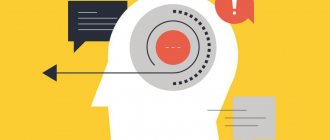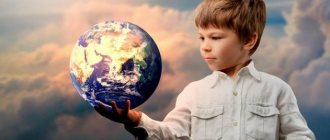Updated July 24, 2021 695 Author: Dmitry Petrov
Hello, dear readers of the KtoNaNovenkogo.ru blog. Absolutely everything in our world is subject to change. If it happens in a positive direction, then it is customary to talk about progress. Negative change implies regression (how is that?).
In the first case, we are talking about development - improvement of a phenomenon or state. What is the essence of development, what are its signs and role in nature, read below.
What does "development" mean?
The word “development” means a rather broad concept. This:
- movement from lower to higher;
- transition from one qualitative state to a more perfect one;
- forward movement from old to new.
That is, development is a natural, inevitable process that means progressive changes in something. Science believes that development occurs on the basis of emerging contradictions between new and outdated forms, ways of the existence of something.
A synonym for the word “development” is the word “progress”. Both of these words denote success in something compared to the past.
The word “regression” has the opposite meaning - it is a movement back, a return from an achieved high level to a previous, lower one, that is, it is a decline in development.
Developmental crisis, developmental delay and developmental disorder: what is the difference?
First of all, parents should understand that age-related crises have nothing to do with disorders in the child’s development. If he began to behave worse, became capricious and demanding, and began to refuse even simple tasks, perhaps we are talking about a completely normal stage of development, when past skills and lifestyle no longer satisfy the growing desire to learn new things and become more independent. Typically, experts identify the following developmental crises: the one-year crisis, the three-year crisis, the seven-year crisis and the crisis of adolescence. All children experience developmental crises differently, but in general, the speed and resolution of them and the severity of conflicts during this period depend on the educational strategies of parents and their attention to the child. With the support of their parents, children quickly master the new stage of their lives and their behavior returns to normal.
Age crises are absolutely normal stages of child development. However, the nature of their course largely depends on the parents, so if you find it difficult to cope with your baby, you can contact a child psychologist to find new ways to communicate with your growing child.
As for developmental delay and developmental disorder, sometimes these two terms are used literally as synonyms, but in fact the difference between the disorder and the delay is quite large, although at first it is not always possible to distinguish between them.
Developmental delays are conditions in which the baby is “stuck” at a certain stage and cannot take the next step. Developmental delays can occur both due to the health of the baby and due to the characteristics of the development environment. Usually, with the right approach to correction and sufficient attention from parents to the area causing difficulties, after some time the child completely catches up with his peers and there is no trace of the delay left.
Developmental disorders are conditions in which the child cannot simply “outgrow” the problem or “catch up” with peers later. This is a qualitatively different mentality or state of health of the baby, caused by a number of reasons: head injuries, poisoning, genetic disorders, etc. In some cases (for example, complex genetic disorders), developmental disorders are irreversible and can only be slightly corrected, but in most cases, a competent approach and attentive attitude towards the child can correct the disorder to a large extent.
Unfortunately, it is not always possible to immediately say what exactly is the cause of the child’s difficulties, but it should be remembered that attention to the area of development that causes difficulty and the timely involvement of specialists usually allows the child to quickly catch up with his peers.
Remember that the first years of a child’s life develop very quickly, which means that even small delays left unattended can develop into new problems in just a few months. That is why we recommend keeping a diary of the child’s development, sharing all your observations with the pediatrician and do not hesitate to ask any questions about the baby’s development.
Types of human development
After birth, a person goes through the following types of development:
- physical - height, weight, physical strength, body proportions increase;
- physiological - the functions of all body systems are improved - digestive, cardiovascular, etc.;
- mental - the senses are improved, the experience of using them grows in order to receive and analyze information from the outside world, memory, thinking, and speech develop; values, self-esteem, interests, needs, motives for action change;
- spiritual - the moral side of the individual is enriched: the need to understand one’s place in the world, the significance of one’s activities for its improvement is formed, responsibility for its results grows;
- social - the range of relations with society is expanding (economic relations, moral, political, industrial, etc.).
The sources and driving forces of human development depend on factors such as living conditions, social circle, as well as on his internal attitudes and needs.
The concept of personality
The words “person” and “personality” are not synonymous. Let's compare their values.
Humans are biological beings with innate physical characteristics. The conditions for its development are favorable external factors: warmth, food, protection.
Personality is a result, a phenomenon of social development, in which consciousness and self-awareness are formed. It has certain psychological and physiological properties acquired as a result of development and upbringing. Psychologists believe that personal qualities emerge only as a result of social relationships.
Each personality is unique, possessing only its own inherent positive and negative qualities. Each person has his own life goals and aspirations, intentions, reasons and motives for action. In choosing means, he is guided by his own circumstances and views on morality. An antisocial personality, for example, does not know or does not recognize generally accepted moral standards and is guided in his actions by selfish goals. Irresponsibility, conflict, a tendency to blame others for one’s own failures, and the inability to learn from one’s own mistakes are characteristic features of such a person.
Read more about engineering and technical innovations
A modern specialist must have skills that were not known about half a century ago: let’s take creative thinking as an example, but this is just the tip of the iceberg. At the same time, the state institutions where people now receive the bulk of their skills - school and university - often use old programs and in this regard are hopelessly outdated. Therefore, relying exclusively on higher education is a risky and partly unjustified idea, since the world is changing much faster than educational standards.
Here we turn to an individual trajectory and development plan, which will be a more correct solution to this equation: they help not only to remember your main goals and growth points, but also to stop relying only on higher education. The meanings of both terms are not fully defined; moreover, their final definition can be debated (especially in the case of “trajectory”). Nevertheless, in general, we can say that the difference between the terms lies mainly in the time frame: ITP is designed for the long term (from 3 years or more), and IPR is designed for the short term (maximum 1 year).
Roughly speaking, ITP can be compared to career planning, and IPR can be compared to a specific job here and now. Taking these settings into account, we will consider the terms within the framework of this article, with a focus on IPR.
External forces of personal development
A driving force is something that pushes an object forward, a kind of spring, a lever. A person also needs incentives for personal improvement. Such incentives include both external driving forces, development factors, and internal ones.
External influences include influences from others - relatives, acquaintances, who convey their own life experience to him.
They convince a person to take (or not take) some actions, change something in life, offer options and means of development, and help him in this.
The driving force behind an individual’s development can be government policy, for example, in the field of education and employment. A person chooses from the available options the specialty or place of work that is most promising for him. As a result, he acquires new knowledge and work skills and abilities—his development as a person occurs.
If a person strives for internal, moral, intellectual growth, he looks for answers to questions that concern him in literature, cinema, works of art, religion, science, analyzes other people’s experience - all of these are also sources that drive his development.
How to change yourself
- You need to change your thoughts.
Reading books and working with a psychologist, you can remain in a state for a long time that “everything is clear.” But you also need to take and take action regarding these changes yourself. You don't need to think, but do everything physically.
- You can't do without positivity
Everything you do must be done with a positive attitude. If every time you say that “I can’t”, “I can’t do this”, “this is hard”, then you will never move forward. A positive attitude and desire are required. Be sure to monitor your negative thoughts and change them into a positive mindset.
However, we should understand that not everything will work out the way we want. Something will not go at all as we planned. But even in this case, you shouldn’t despair and give up everything. We need to move on.
What do I want to change by engaging in self-development and personal growth?
It's worth asking yourself a few questions:
- What do I want to start doing?
For example, learn to swim or ride a bike. Or maybe learn to set goals and plan.
- What do I want to stop doing?
For example, working at a job you don’t like, or maybe smoking, engaging in idle pastimes and watching endless TV series.
- What would you like to buy?
Some people want to acquire new skills, others want to find a new job and improve their income. Or maybe you want something material. It is worth thinking carefully about this issue.
- What do I want to change in my life?
For example, place of residence, or maybe country of residence. Lifestyle, gain financial freedom or monetize your hobby.
Internal incentives for personality development
An indispensable condition and driving forces for the development of an individual are the growth of his mental capabilities and needs, their contradiction with the old ones. The insufficiency of internal and external means pushes a person to search for new, adequate ways to satisfy increased demands - forced or conscious assimilation of new knowledge, skills and abilities occurs, and a sensory, emotional perception of the world develops.
Then the process repeats: the acquired experience becomes outdated and the need arises to resolve requests of a new, higher level. As a result, connections with others become more conscious, selective, and diverse.
Neural connections and self-talk
New neural connections do not appear immediately. You need to work on them. Therefore, there must be new skills and new knowledge to know how to change everything. Physiologically, the body and head must get used to these changes.
And to understand that they are good for you, you must be calm and happy. And here, too, you can use the technique of “talking to yourself.” About the fact that “it’s like this for now, but everything is moving towards a better, more profitable and more fun life.”
Any habit takes root within three weeks or a month. Therefore, do not sabotage, but simply gradually introduce this habit into action. Soon it will become your reliable support on the path to change. For example, repeating a new habit over and over again will reinforce it in your brain.
Talking to yourself
Personal development goals
As we see, the driving forces of development are the needs of society to educate a person who meets essential social criteria, and the need of the person himself for self-development.
The image of a full-fledged and self-sufficient member of society should look like this. The social and personal goals of an individual’s development coincide. He will be useful to society and will fulfill his own growth program, if his abilities are realized, he will be spiritually and physically healthy, educated, efficient, purposeful, and creative.
In addition, his interests must be socially oriented and realized in social activities.
Conclusion:
Sometimes we all need a push for self-development, and having received it, it is not difficult to achieve truly high levels. Even those people who have already achieved full realization in life should not stop there. There is always something to strive for, in which direction to move further, to become even better!
And if you are confused in yourself and don’t know how to correctly set goals on the path to success, then personal growth trainings will definitely help you untangle the tangle of your capabilities and direct it in the right direction. Sometimes it is good motivation and valuable incentive that we so lack on the road to our goals. Good luck!
Topic: Personal growth
Stages of development
The driving forces of development are, as we see, a whole complex of influences on a person throughout his life. But this influence must be dosed, and the goals, forms, means, and methods of education must be appropriate to the age stages of a person and the level of his individual development. Otherwise, personality formation is slowed down, distorted or even stopped.
Stages of personality formation according to D. B. Elkonin and the leading type of activity in each of them:
- Infancy – direct communication with adults.
- Early childhood is an object-manipulative activity. The child learns to handle simple objects.
- Preschool age – role-playing game. The child tries on adult social roles in a playful way.
- Primary school age - educational activities.
- Adolescence – intimate communication with peers.
Taking into account this periodization, you should know that the driving forces of development are both special knowledge in the field of pedagogy and psychology, and a reasonable approach to the choice of means of education at each age stage of the child.
Concept of development. Basic properties, principles and patterns of development
The idea of development came to psychology from other areas of science. Charles Darwin's work “The Origin of Species by Means of Natural Selection” prompted researchers to study the course of mental development of children. Development for the first time began to be viewed as a gradual adaptation of the child to the environment. One of the first attempts to systematically monitor the psychological and biological development of a child from birth to three years is described in V. Preyer’s book “The Soul of a Child,” in which the author described the development of his daughter.
Development is a process of irreversible, directed and natural changes, leading to the emergence of quantitative, qualitative and structural transformations of the human psyche and behavior.
Almost all researchers agree that development can be defined as change over time. Yu.N. Karandashev identified the main approaches to defining the concept of “development”:
— Development as growth is the process of quantitative changes in the external characteristics of an object, measured in height, length, width, thickness, weight, etc. In modern science, such a definition is not found, since growth is just one of the aspects of development, its external indicator and quantitative characteristic.
— Development as maturation is morphological changes occurring under the direct control of the genetic apparatus. In modern science, such a definition is not found, since the importance of biological heredity is exaggerated here and the importance of other aspects of development is downplayed.
— Development as improvement. This definition is often used in pedagogy and is teleological in nature, i.e. it initially assumes the presence of a goal (teleo), which is a certain “perfect”, ideal form of development, but it is not clear whether it is externally (God, education , external environment) or internally given (through the hereditary apparatus), and why exactly this form of development should be considered as the best, most perfect, and not any other.
— Development as a universal change. As one of the criteria for determining development, the requirement of generality, universality of the changes taking place is put forward, i.e. the same changes should take place in people of different cultures, religions, languages, levels of development, but it is impossible to really establish which changes are classified as common, universal, and which ones to consider as particular.
— Development as a qualitative, structural change. The definition of development through qualitative changes is associated with the understanding of an object as a system. In this case, we are talking about improving only the structure of the object; the quantitative measure of improvement is excluded and only the qualitative one is retained.
— Development as a quantitative and qualitative change. This definition most fully reveals the essence of the concept of “development”.
— Development as a change that entails new changes. Dissatisfaction with existing definitions of development stimulated the search and emergence of new ideas. For example, G.-D. Schmidt shows the presence of a close, existential connection between changes following each other, A. Flammer notes that only such changes that entail new changes (“avalanche of changes”) should be considered development. This definition promotes the idea of evolutionary continuity of change.
HER. Sapogova notes that changes occurring in development can be:
— quantitative (qualitative);
— continuous (discrete), discontinuous;
- universal (individual);
- reversible (irreversible);
— purposeful (undirected);
— isolated (integrated),
- progressive (evolutionary) or regressive (involutionary).
Development can be considered at phylo-, anthropo-, onto- and micro levels:
— Phylogeny is the development of a species, i.e., the maximum time distance, including the emergence of life, the origin of species, their change, differentiation and continuity, i.e., the entire biosocial evolution, starting with the simplest and ending with man.
— Anthropogenesis is the development of humanity in all its aspects, including cultural sociogenesis, that is, the part of phylogenesis that begins with the emergence of Homo sapiens and ends with the present day.
— Ontogenesis is individual development, i.e., a temporary distance the length of a human life, which begins from the moment of conception and ends with the end of life.
— Microgenesis is the shortest time distance, covering the “age” period, during which short-term processes of perception, memory, thinking, imagination, detailed sequences of actions (for example, problem-solving behavior), etc. occur.
The main properties of development are:
— irreversibility — the ability to accumulate changes, “build on” new changes over previous ones;
— directionality — the system’s ability to pursue a single, internally interconnected line of development;
— regularity — the ability of a system to reproduce similar changes in different people.
In modern psychology, the problem of development is intensively developed within the framework of genetic psychology, comparative psychology, psychogenetics, developmental psychology and acmeology.
Main areas of mental development:
1) the psychophysical area of development, includes external (height and weight) and internal (bones, muscles, brain, glands, sensory organs, constitution, neuro- and psychodynamics, psychomotor) changes in the human body;
2) the psychosocial area of development, which involves changes in the emotional and personal spheres. At the same time, special mention should be made of the importance of interpersonal relationships for the formation of the self-concept and self-awareness of the individual;
3) the cognitive area of development, which includes all aspects of cognitive development, the development of abilities, including mental ones.
The individual is the bearer of the psychophysical properties of a person. The bearer of psychosocial properties is the individual, and the bearer of cognitive properties is the subject of activity.
Currently, human mental development is considered from the point of view of a systematic approach, which includes four aspects:
— dynamic characterizes mental development as a process that takes place throughout life, i.e. it is the age-related dynamics of various mental functions (perception, attention, memory, thinking, etc.);
— structural — qualitative changes in mental processes, for example, the complication of memorization processes, the development of rational thinking techniques;
— causal — determination of determinants, driving causes of development;
— ontological — clarification of the specifics of human mental development as a biological and social unity.
Thus, a systematic approach to development involves the study of what, how, in what direction, with what changes, for what reasons develops in the psyche and personality of a person - a biosocial being - throughout life.
The following types of development are distinguished:
- preformed development - a type of development when at the very beginning both the stages that the organism will go through and the final result that will be obtained are specified;
- untransformed development - a type of development that is not predetermined;
- mental development - development of cognitive mental processes;
— personal development — the development of human qualities, moral judgments, motivational-need sphere and “I” concept.
Mental and personal development are closely interrelated, but not always unidirectional or adjacent. At different age periods they may not coincide and influence each other differently.
Factors of mental development are the leading determinants of human development: heredity, environment and activity. The action of the heredity factor manifests itself in the individual properties of a person and acts as a prerequisite for development, the action of the environmental factor (society) - in the social properties of the individual, and the action of the activity factor - in the interaction of the two preceding ones.
Let's consider each of the factors in more detail.
1. Heredity is the property of an organism to repeat similar types of metabolism and individual development in general in a number of generations.
M.S. Egorova and T.N. Maryutina, comparing the importance of hereditary and social factors of development, emphasize that the genotype (genetic constitution of the organism) contains the past in a collapsed form: information about the historical past of a person and the program of his individual development. Thus, genotypic factors typify development, that is, they ensure the implementation of the species genotypic program and at the same time the genotype individualizes development. Research by geneticists has revealed an amazingly wide polymorphism that determines the individual characteristics of people. Each person is a unique genetic object that will never be repeated.
2. Environment - the social, material and spiritual conditions of his existence surrounding a person. Phenotype is the totality of all the characteristics and properties of an individual that developed in ontogenesis during the interaction of the genotype with the external environment. It should be emphasized that environment is a very broad concept. There are different types of environments, each of which influences human development in its own way, therefore, when describing the determinants of mental development, this concept needs to be specified. In a broad sense, environmental determinants of mental development include learning.
Mental development is influenced by macro (country, ethnic group, society, state), meso (region, media, subcultures, type of settlement) and micro factors (family, neighborhood, peer groups).
3. Activity is the active state of the organism as a condition of its existence and behavior, which manifests itself when the movement programmed by the organism towards a certain goal requires overcoming the resistance of the environment. The principle of activity is opposed to the principle of reactivity.
According to the principle of activity, the vital activity of an organism is the active overcoming of the environment; according to the principle of reactivity, it is the balancing of the organism with the environment. Activity manifests itself in activation, various reflexes, search activity, voluntary acts, will, acts of free self-determination.
Conditions for personal growth
Healthy heredity, psychophysiological health and a normal social environment, proper upbringing, development of natural inclinations and abilities are indispensable conditions for human development. Their absence or the presence of unfavorable development factors lead to the formation of a defective personality.
There are numerous examples of how negative external influences or internal motives slowed down or even stopped the formation of a full-fledged member of society. For example, an unhealthy family climate, erroneous life principles and attitudes create in a child incorrect ideas about his place in this world and the ways to achieve it. The result is a denial of social and moral values, a lack of desire for self-development, spirituality, education, and work. A dependent psychology, asocial morality, and adherence to lower impulses are formed.
The ability for development inherent in nature itself, the internal driving forces of personality development, are completely or partially absent in people with hereditary or acquired malformations of the central nervous system. Their existence comes down to satisfying physiological needs.
Five areas of child development
Child development can be viewed from five different perspectives:
Cognitive development
This includes all skills related to information processing: thinking, memory, attention. The ability to learn and understand this world primarily depends on these skills. The development of cognitive skills is about the ability to classify objects, count, name colors and shapes, identify patterns, etc.
Emotional and communication development
These include skills in interacting with others and the ability to express and control emotions. In infancy, the development of this area begins with smiling and humming in the presence of familiar people. Later, the development of communication and emotional skills includes the ability to make acquaintances with peers, express one’s feelings, be able to ask for help, etc.
Speech development
This includes all stages of development of language understanding and use. In infancy, this is humming and babbling; in older age, this is the ability to understand spoken speech and correctly use and pronounce words and sentences in one’s own speech.
Development of gross and fine motor skills
This includes mastery of one’s own body: fine motor skills primarily refer to the degree of development and control of the muscles of the hands and fingers, while gross motor skills refer to the control of the large muscles of the body, which affect the overall coordination and dexterity of the baby. The development of this skill begins from the first days of life, when the baby learns to grab objects with his hand, hold his head, roll over, crawl, etc. In adulthood, this includes the ability to use cutlery and writing instruments, make various crafts, as well as run, jump, and perform various gymnastic exercises.
Development of household skills
This category includes all self-care skills: the ability to eat, dress, shower and go to the toilet independently, organize a work space, etc.
For each of these categories there is an approximate list of skills for different ages. Here, for example, is a list of cognitive skills of a three-year-old:
- Knows the basic colors and can name them,
- Counts to 10
- Has an idea of the time of day (morning, afternoon, evening, night),
- Can remember and retell simple stories
- Can find simple similarities and differences between objects (e.g. big/small),
- Can follow simple instructions (eg, bring your shirt and put it in your cart).
Complete lists of skills for different ages can be found in other articles on our website or refer to the literature on child development (for example, “Child Development Calendar” by Elena Khramova).
Small differences in the time and order of acquisition of various skills should not bother parents in any way. For example, if the baby does not roll over by 4 months, but the rest of his condition does not bother the mother, then this phenomenon can be safely attributed to individual developmental characteristics and we can expect to master this skill in the near future. You should react completely differently if a baby of the same age not only does not roll over, but also does not hold his head well when lying on his back and stomach and does not hold objects in his hands.
Unlike difficulties with individual skills, which can be attributed to individual developmental characteristics, a whole complex of several skills that have not been mastered by a certain age can signal a delay in one or more areas of development.










